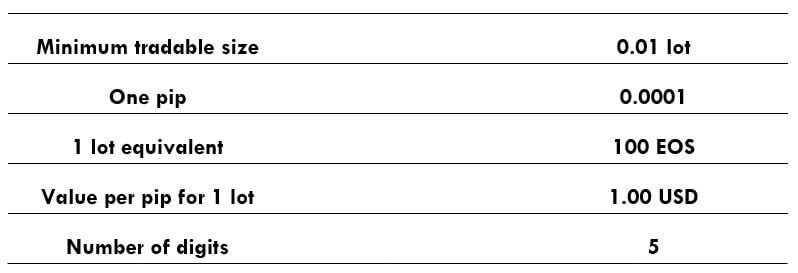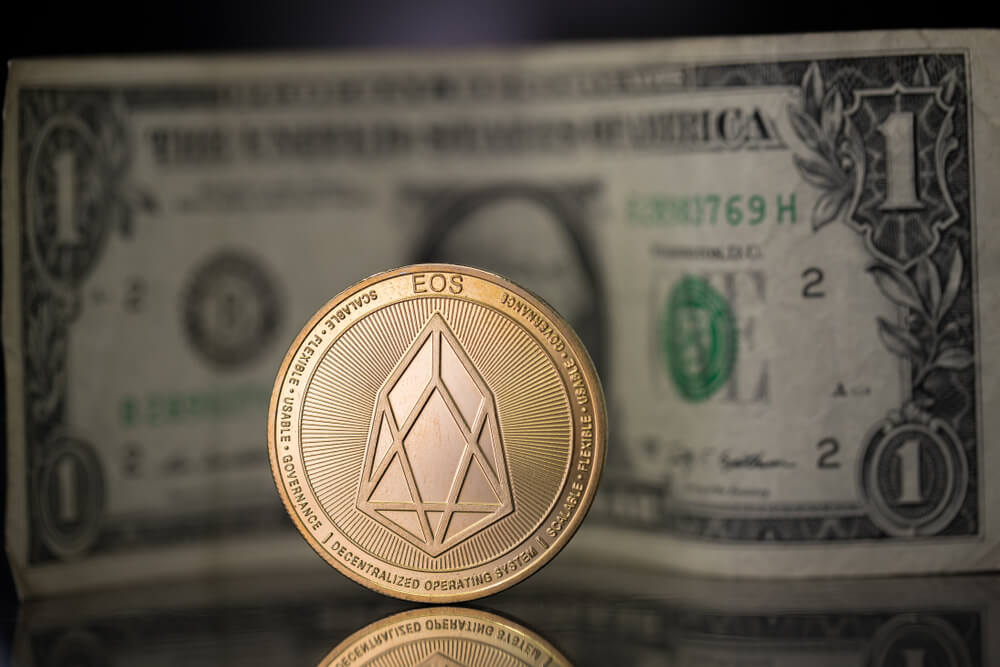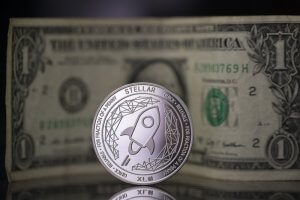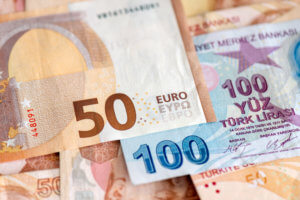Introduction
EOS is a blockchain-based cryptocurrency, as well as a platform for decentralized app execution. This blockchain was developed despite the existence of Bitcoin and Ethereum to solve the problem of speed and scalability.
Understanding EOS/USD
The price of EOS/USD represents the value of the US Dollar equivalent to one EOS. It is quoted as 1 EOS per X USD. So, if the market price of EOS/USD is 2.5290, these many dollars are required to buy one EOS.
EOS/USD specifications

Spread
The difference between the bid & ask prices is known as spread. It changes with the execution model used brokers. Below are the spreads for both ECN & STP models for EOS/USD pair.
Spread on ECN: 10 pips | Spread on STP: 13 pips
Fee
A Fee is basically the commission on the trade. Note that there is a fee on ECN accounts, not STP.
Slippage
Due to high market volatility and the broker’s slower execution speed, slippage occurs. It is a difference in the price intended by the trader and price executed by the broker.
Trading Range in EOS/USD
The trading range is basically a tabular representation of the pip movement in EOS/USD for different timeframes. These numbers can be used traders as a risk management tool as determines the approx. profit/loss that can be made on a trade.

Procedure to assess Pip Ranges
- Add the Average True Range indicator to your price chart
- Then set the period to one
- Add a 200-period Simple Moving Average to this indicator
- You can assess a large time period by shrinking the price chart
- Select your desired timeframe
- Measure the floor level and set this value as the min
- Measure the level of the 200-period SMA and set this as the average
- Measure the peak levels and set this as Max.
EOS/USD Cost as a Percent of the Trading Range
The total cost comprising of the spread, slippage, and trading fee, changes with the volatility of the market. Hence, it is necessary for traders to position themselves to avoid paying high costs.
Below is a table representing the variation in the costs for different values of volatility.
ECN Model Account
Spread = 10 | Slippage = 3 |Trading fee = 5
Total cost = Slippage + Spread + Trading Fee = 3 + 10 + 5 = 18

STP Model Account
Spread = 13 | Slippage = 3 | Trading fee = 0
Total cost = Slippage + Spread + Trading Fee = 13 + 3 + 0 = 16

Trading the EOS/USD
The volatility and liquidity in this pair are similar to coins like Bitcoin and Ethereum. Hence, this makes EOS/USD a tradable pair. The spread in this pair is between 10-15 pips, which is extremely less compared to its volatility. Due to this, the costs reduce significantly. The highest cost percentage is only 18%.
However, we cannot ignore the fact about the volatility in this pair. This pair is pretty volatile and must be traded cautiously. It is recommended for traders to trade when the volatility of the market is around the average values. Furthermore, the costs can be reduced even further by placing orders as a limit or stop instead of the market. In doing so, the slippage will become zero and will reduce the total cost of the trade.






